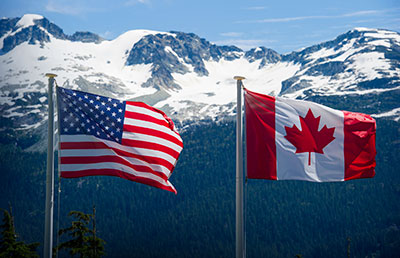
Opportunity abounds in Canada. Know the country’s regulations and taxation triggers before you expand your manufacturing or distribution business northward.
If you are a manufacturer or distributor with plans to expand your operations into Canada, then good for you. A cross-border relationship with Canada is a smart choice with mutual interests for your business and our two countries.
We always advise manufacturing and distribution companies to look before they leap onto the global scene. Advance planning generally has far better results than spontaneous entry into international markets. So before you transact with our friends to the north, understand the overall business climate and some of the regulatory and technical ins and outs of Canadian trade.
Canada is good for U.S. business and vice versa
Our Canadian allies are strong, reliable business partners who not only share a border with us but also many similar customs and, in large part, a common language; Canada is often a natural choice for United States businesses pursuing international commerce. In fact, more than 8 million American jobs are generated by our trade and investment with Canada. Among countries with foreign direct investment (FDI) in the U.S., Canada ranks fourth. Much of that FDI goes into manufacturing and distribution, especially industrial machinery, transportation, and metals. And what Canada produces and sells to the U.S. contains an average of 25 percent American content; clearly, our trade relationship is reciprocal in its benefits.
Be aware of regulations before you sell products to Canada
Every country has its business and trade idiosyncrasies to contend with. Canada’s aren’t particularly formidable, but you can cause some trouble for yourself if you aren’t aware and on top of some of its regulations and taxation triggers.
- Perishable vs. nonperishable products — Canada has strict regulations on perishable products. If you want to export agricultural or food products to this country, get intimately familiar with the rules and regulations governing perishables. An incorrect understanding can seriously cost you.
- Sales office or market penetration plan vs. business entity — If you intend to feel out or test the market before you export to Canada more permanently, then consider setting up a sales office or market penetration plan rather than a business entity. Many tax treaties provide exclusion from permanent establishment (PE) status if you go that route. PE may pull your foreign entity into immediate taxation and compliance in Canada.
- Local vs. foreign sales force — If you plan to hire Canadian locals as sales representatives, you will have to carry social insurance and cover other costly employee benefit mandates. It may be more cost-effective to hire independent contractors in certain situations.
- Storage facilities — Maintaining storage facilities may jeopardize your PE exclusion status and activate certain tax implications. Also, be aware of the costs of storage, and strategically locate facilities to optimize operational costs and savings.
- Banking — Maintaining bank accounts in Canada may also put PE exclusion status at risk. Know how to bank within Canadian borders in ways that don’t tally up the taxes on your operations.
- Good and services tax and harmonized sales tax (GST/HST) — Almost all products and services are subject to GST/HST in Canada, which can greatly affect the cost of your exports. There are federal and provincial components to this tax, so it significantly impacts foreign suppliers. Get up to speed and plan advantageously.
- Product insurance — Foreign products are generally not well accepted by the local insurance companies in Canada. They do not understand the risk on foreign products and don’t want to insure them. To the extent possible, try for a “global” policy that covers foreign jurisdictions.
Other considerations when exporting to Canada
Do your homework on these Canadian trade details.
- A licensed customs broker may be a helpful guide in starting your foray into Canada. It could be wise to avail yourself of a broker’s experience and knowledge on customs-related requirements, necessary documentation, and recordkeeping responsibilities.
- Make sure the products you want to sell in Canada are even permitted before you lay the groundwork for exporting them. This list of banned items isn’t extensive, but if you rely on prison labor, for instance, in the manufacture of your products, Canada won’t accept them.
- Some goods and products heading into Canada require permits or have certain restrictions on them. It’s not uncommon for a constellation of government agencies to require various certificates and permits; make sure you are in line with each agency’s rules.
- Know how to classify your products in the Canadian 10-digit tariff system, and determine the applicable tariff treatment and duty rate on them.
- Become familiar with trade-incentive programs that may be advantageous to your company (or your competition, for that matter).
- Prepare to interact with the Canada Border Services Agency (CBSA). You will have to report your goods to the CBSA.
- Know the CBSA recordkeeping rules. You’ll have to retain your records for six years.
The Canadian market is rife with opportunity for manufactures and distributors looking to take part in it. Study up on all the regulations that govern it and what taxes may spring up with certain activities, then head north with confidence.
